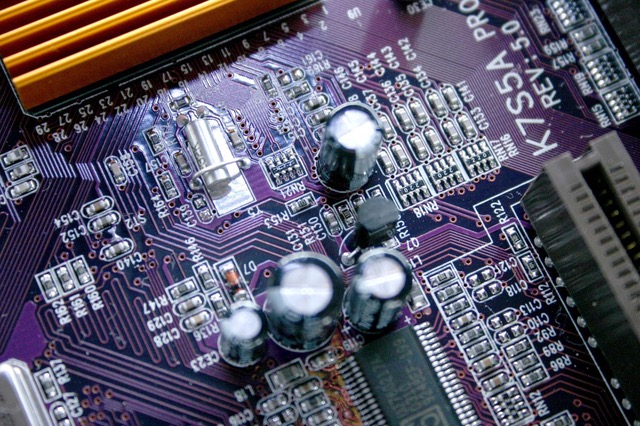The countdown is here for IEC 62368-1, the safety standard for Information Technology Equipment and Audio/Video Equipment. If you have not started your planning, do so. There is a lot of information to read through and little time before the deadline. 62368-1 is the standard intended to replace IEC 60950-1 and IEC 60065. A hazard-based, performance-oriented standard, it requires mandatory product certification for most manufacturers by December 20, 2020. On this date, any product covered by the scope of 62368-1 must be tested in accordance with that standard.
For almost 25 years, Hazard-Based Standard Engineering (HBSE) has been the approach for demonstrating that known hazards have been considered, and that a product was designed to be safe in its context. Moreover, it was HBSE that established the principle that safety was not product dependent but rather, it was based on the energy within the equipment.
This hazard-based approach is different than what was implemented earlier-- prescribing that specifications have been met, and that hazards have been considered. And, in its expected context, the product should be designed to be safe. For the new standard, hazards are identified as soon as possible, by type. For example, the hazards (Electrical, Thermal, Chemical, Kinetic, and Radiation) need to be identified with safeguards implemented to be derived and implemented prior to the completion, or production, of the design. Equipment user’s protection falls under the standards and should reflect the approach HBSE takes.
Why another standard? For a couple of reasons. The standard provides greater flexibility to product designers to design safety measures that are better matched to their products. Also, the standard was required to distinguish between equipment covered by standard 60950-1 (ITE), and the equipment (AV) covered by standard 60065. 62368-1 unifies these two standards, so while the scope is the same, the philosophy for the new standard is aimed to create a more flexible, forward thinking approach for safer and better products for end users. After all, we are living in a world of more affordable electronics, display products and smartphones.
IEC 62368-1 covers all completed products, components, and sub-assemblies (such as power supplies, hard drives, fans, etc) that formerly came under the scope of IEC 60950-1 and IEC 60065. This is important when procuring parts throughout the period leading up to December 20, 2020. Note there will be no grandfathering period.
Transitioning
Sub-clause 4.1.1 of 62368-1 temporarily permits companies in the US to continue using their inventory of 60950-1 or 60065 parts in products certified to the new standard:
“Components & subassemblies that comply with IEC 60950-1 or IEC 60065 are acceptable as part of equipment covered by this standard without further evaluation other than to consider the appropriate use of the component or subassembly in the end-product.”
And for the US, ULwill continue to accept 60950-1 or 60065 for legacy products after December 20, 2020 date if significant changes involving safety of critical components are not made to the specific parts in question. Component and subassemblies in the EU however will need to certify to 62368-1 in conjunction with the December 20, 2020 adoption date. The desire for continuing use of the legacy 60950-1 or 60065 parts by different entities indicate just how much of an impact the new standard will have on manufacturers. Nevertheless, manufacturers should educate themselves on the standard and possible continued use. To gain an overview of the standard, its history and more, Clause 0 of Edition 2 provides a thorough primer.
Timeline
December is right around the corner. Certification can take weeks or months to complete, additionally, keep in mind that many test labs will be constricted as products are trying to beat the deadline. While costs can differ, higher costs for certifications is a possibility. Countries around the world are transitioning differently. Look below to see how these countries will be working with the transitions:
- The US will experience a soft transition beginning 12/20/2020 wherein all new certifications will be validated against UL/CSA 62368-1, however existing products are not required to update.
- Europe will be making a hard transition beginning 12/20/2020 to the new standard. Both new and existing products are required to updated. All new system designs after 12/20/20 will require components that are 62368-1 approved.
- The rest of the world will have varying degrees of implementation with both hard and soft transitions. The following countries will have a hard transition for the new standard beginning 12/20/20: Canada, United Kingdom.
- Australia and New Zealand will have an enforcement date of 2/15/2022.
- India, Taiwan, and China are examples of countries that won’t be adopting the new standard. Mexico currently has no enforcement date available.
| Standard | Applicable to: |
| IECV 62368-1 | Safety of electrical and electronic equipment within the field of audio, video, information and communication technology, and business and office machines with a rated voltage not exceeding 600 V. |
| IEC 60950-1 IEC 60065 |
Mains-powered or battery-powered information technology equipment, including electrical business equipment and associated equipment, with a rated voltage not exceeding 600 V. |
Our position / About Us
Interface Masters provides its OEM customers with reliable solutions. Our customers depend upon us to design and manufacture our products with the end users’ safety and product dependability in mind. Our knowledge of 62368-1 and implementing the requirements in the standard puts us in a stronger position to provide compliant products that are safe and well built.
For over 25 years Interface Masters Technologies has provided off-the-shelf, innovative network security solutions in addition to custom solutions for OEMs, Fortune 100, and startup companies. Our headquarters are in San Jose, California in the heart of Silicon Valley where we are proud to design and manufacture all of our products. Based on MIPS, ARM, PowerPC and x86 processors, Interface Masters appliance models enable OEMs to significantly reduce time-to-market with reliable, pre-tested and pre-integrated networking solutions that can meet the most challenging security requirements.


